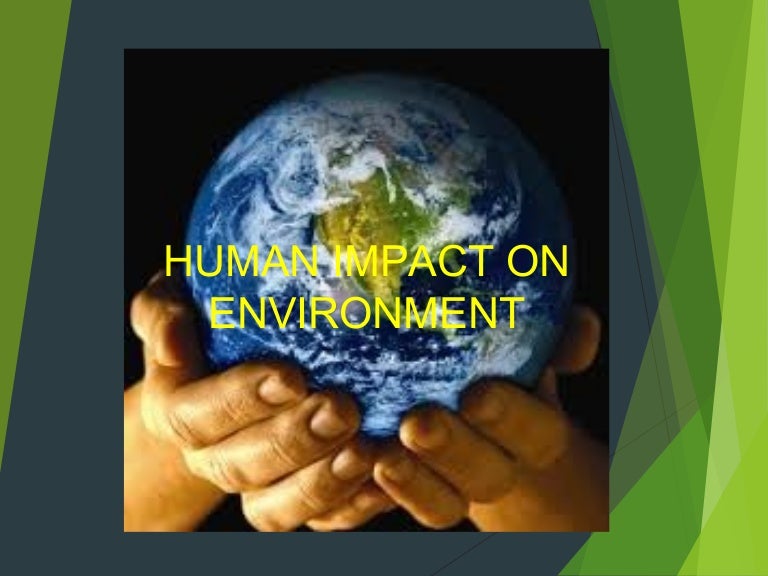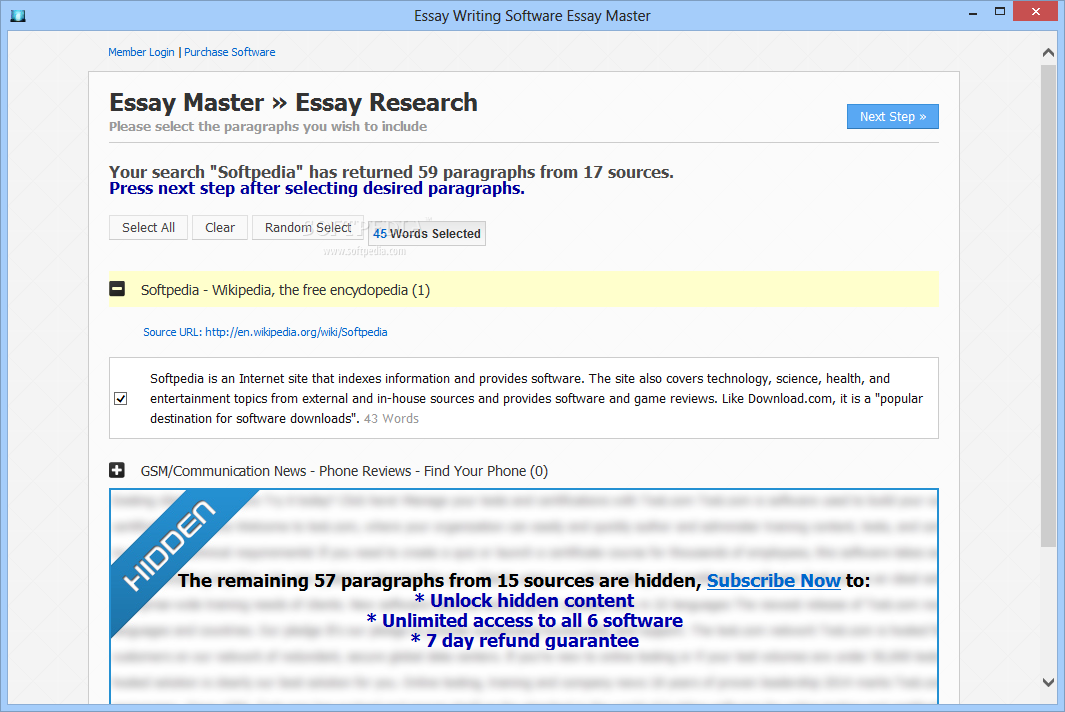
Apr 02, · Why human impact on the environment is leading to infections like COVID It is believed that the COVID pandemic originated in a bat, joining a long line of diseases that have jumped from animals to humans. As we continue to encroach on the environment and erode natural habitats, the likelihood of other diseases like COVID emerging to Human impact on the environment or anthropogenic impact on the environment includes changes to biophysical environments and to ecosystems, biodiversity, and natural resources caused directly or indirectly by humans, including global warming, environmental degradation (such as ocean acidification), mass extinction and biodiversity loss, ecological crisis, and ecological collapse Physical Activity Promotion and the United Nations Sustainable Development Goals: Building Synergies to Maximize Impact Authors: Deborah Salvo, Leandro Garcia, Rodrigo S. Reis, Ivana Stankov, Rahul Goel, Jasper Schipperijn, Pedro C. Hallal, Ding Ding, and Michael Pratt
Human impact on ecosystems review (article) | Khan Academy
It is believed that the COVID pandemic originated in a bat, joining a long line of diseases that have jumped from impact of human activity to humans. As we continue to encroach on the environment and erode natural habitats, the likelihood of other diseases like COVID emerging to devastate the planet are high. Within a matter of months, since it first emerged in Wuhan, China, the SARS-CoV-2 virus — which causes the disease COVID — has infected more than 10 million people and caused over half a million deaths.
Although the exact origin of the COVID virus is still unknown, it is likely that the new coronavirus is a zoonotic infection — meaning one that spreads from animals to humans — and the current thinking is that this coronavirus went from bats to humans via an intermediary animal. The other two coronaviruses that have recently threatened human health — SARS and MERS-CoV — as well as Ebola, have also been found in bats. Bats often harbour viruses that can jump to humans because their physiology and immune systems may create ideal environments for viruses to flourish.
Other animals have also been implicated in the emergence of zoonotic disease. This is what likely occurred with the H1N1 swine flu pandemic impact of human activity Other mammals, like primates and camels can also be the intermediaries between animal reservoirs and humans.
Zoonotic infections have always been a risk to human health, as people continuously interact with animals through farming and hunting, or sharing habitats such as in the case of malaria, which is spread human to human via mosquitoes.
While many endemic zoonotic diseases can be quite prevalent, measures to control them, such as livestock management, proper sanitation and controlling the spread of animals that spread disease such as mosquitoes, can mitigate their impact. Emerging zoonotic infections are always a particular threat because no natural immunity exists among people and there are no standard control measures, impact of human activity.
But when a zoonotic infection no longer needs an animal to directly infect humans, and can instead sustain transmission from one human to another human, it poses an even greater threat. Combined with the right factors of how contagious the disease is, impact of human activity, how many people it can kill and how well it can impact of human activity before it is detected, we impact of human activity see the makings of a pandemic.
The risk of emerging infectious diseases such as COVID from animals is on the rise, impact of human activity, in large part because of our environmental footprint and the blurring between impact of human activity natural and the built environments.
Increasingly, impact of human activity, humans, livestock and wildlife are interacting in new and impact of human activity ways, bringing new species — and their resident infections — together with unpredictable results.
Climate change is accelerating the loss of animal habitats and the ways humans change the land. Cutting down old-growth and rain forests, which harbour a rich biodiversity of life, to create agricultural or pastoral land potentially brings people and livestock in closer contact with previously isolated populations of bats, and other animals harbouring previously unencountered disease.
In turn, impact of human activity, biodiversity loss threatens natural food sources which means animals seek other sources of food found where people live. As climate change causes large disasters like floods and drought, human food sources are also lost, and growing food insecurity pushes people to further encroach on animal habitats, increasing animal contact and contributing to the trade in wildlife. The speed and magnitude of environmental change has implications for future epidemics and pandemics.
Such markets can be ideal environments for zoonotic spread as the unusual mixing of animals which is not common in the wild can provide opportunities impact of human activity viruses to jump between species, and potentially then to people. However, environmental change also threatens other livelihoods beyond the animal sector as more and more people are pushed to seek other sources of income, such as wildlife trade or bushmeat hunting.
This will only increase if they are not given opportunities to earn income in other ways. These increasingly vulnerable people also often exist at the margins of health service provision and access. They live in rural and remote areas, are displaced because of conflict or have moved to informal urban settlements and tend to be missed by routine immunisation programmes and health services.
The failure of primary health care to reach these communities will mean they lack basic protection against preventable disease, may be missed by disease surveillance networks and will face issues in accessing care should they be exposed to COVID The direct damage from environmental destruction has been evident for years. We are only just now starting to get a sense of the collateral damage, including the emergence of secondary effects such as zoonotic infections that threaten human health.
While we race to contain the spread of COVID and its toll on human health, we will also need to take stock of how we can contain future pandemics, providing an increasingly compelling case for protecting animal habitats. Pandemic Culture: Painting for joy - and vaccine confidence - in California. Is modern life encouraging the evolution of deadlier viruses? COVID masks: how and when to ask someone to wear one — without getting into a fight. Review: COVID, impact of human activity, Quickly — A Scientific American podcast series.
Home Vaccineswork Why human impact on the environment is leading to infections like COVID Back to Why human impact on the environment is leading to infections like COVID It is believed that the COVID pandemic originated in a bat, joining a long line of diseases that have jumped from animals to humans.
Have you read? What kind of tests are there for COVID? The COVID vaccine race Will wearing a mask protect me from COVID? TOPICS: COVID Related Content. Pandemic Culture: Painting for joy - and vaccine confidence - in California Educational Pandemic Culture COVID Pandemic Culture Educational COVID Educational COVID COVID masks: how and when to ask someone to wear one — without getting into a fight Educational COVID Review: COVID, Quickly — A Scientific American podcast series Book club COVID Subscribe to our newsletter Subscribe First Name.
Last Name. Leave this field blank.
Human Impacts on the Nitrogen Cycle
, time: 4:01Free radicals, antioxidants and functional foods: Impact on human health
i. As also emphasized by Amartya Sen, who highlighted the impact of responses to crisis when the approach is informed by equity considerations, which can actually bring some that were worse off during the crisis to better standards of living during the crisis – and that in the absence of an equity crisis, the cost in human development and even lives can be massive (Sen ) Physical Activity Promotion and the United Nations Sustainable Development Goals: Building Synergies to Maximize Impact Authors: Deborah Salvo, Leandro Garcia, Rodrigo S. Reis, Ivana Stankov, Rahul Goel, Jasper Schipperijn, Pedro C. Hallal, Ding Ding, and Michael Pratt The impact of state laws and district policies on physical education and recess practices in a nationally representative sample of us public elementary schools. Arch Pediatr Adolesc Med. ;(4) U.S. Department of Health and Human Services. Physical activity guidelines for americans

No comments:
Post a Comment